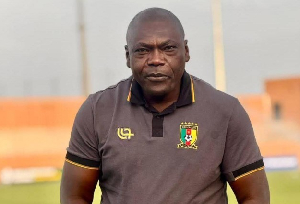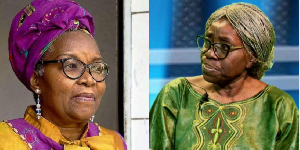The decision to buy a plane for the President was taken in the immediate aftermath of Cameroon’s debt relief of $2 billion by the G-8 group of donors on October 16, 2000, under the HIPC framework.
The government had agreed amongst other things to implement a growth and poverty reduction strategy with an ambitious program to construct 2500 classrooms; undertake vaccination of 70% of children; intensify the fight against malaria and HIV-AIDS; implement structural reforms through macro-economic stability, good governance and the fight against corruption. The $2 billion debt relief was supposed to reduce Cameroon’s debt servicing payments from 23% of GDP to 12%, but Biya had other plans.
The initial plan to finance the purchase with a standby letter of credit that would mitigate the risks was rejected by Michel Meva’a Meboutou who suggested that a cash disbursement be made from accounts operated by the National Hydrocarbons Corporation (SNH) directly to GIA international. On the personal instructions of President Biya (sur les tres hautes instructions de Monsieur le President de la Republique), Marafa Hamidou Yaya ordered Meva’a Meboutou to direct the General Manager of SNH, Adolphe Moudiki Elame to proceed with the disbursements to GIA International.
On the same day, August 21, 2001 that he received the instructions, AdolpheMoudiki ordered the transfer of $2 million (FCFA 1.5 billion) to Camair account in CBC from the SNH account in SCB-Crédit Lyonnais in Yaoundé. On August 23 and 24, 2001, SNH wired $16 million and $13 million respectively to the GIA International account No: 323 070 380 with Bank of America in Medford from its accounts in BNP Paribas and Crédit Lyonnais in Paris, France. Yves-Michel Fotso had earlier wired the $2million to the same account from Camair account in CBC; bringing the total to $31 million!
The cavalier manner in which such colossal and mind-boggling sums of money were wired from one account to another, without appropriate documentary evidence, and without any oversight or checks and balances, and just on the word of the President points to a much more insidious problem; that of a complete lack of transparency and accountability in the conduct of government business – in effect a total abuse of presidential power and impunity.
Undoubtedly, in a state governed by rule of law, criminal responsibility in the Albatross affair cannot end only with those who were directly involved in the process. The President must therefore have his own day in court to answer to the Cameroonian people why he authorized the disbursement of billions of francs without due diligence. The Albatross affair has cost an estimated FCFA 52 billion and is still counting; in violation of articles 74, 96 and 184 of the penal code.
Hallmarks of a “419-Deal”
Following the disbursement of the funds, Bank of America wrote to the French banks requesting full disclosure of the terms of the business transaction, including copies of the contract and invoices for which a small company like GIA International would be receiving such huge payments, Bank of America found suspicious based on GIA’s prior banking history. The French banks then passed the query to SNH to justify the raison d’etre of the payments, failure to which they would freeze SNH accounts.
Between October 2001 and January 2002, Adolphe Moudiki sent three letters to the Minister of Finance, Michel Meva’a Meboutou demanding copies of the contract and the invoice with GIA International to no avail. Finally on February 18, 2002, Meva’a Meboutou replied to Adolphe Moudiki transmitting a letter from Yves-Michel Fotso bearing the address of GIA International in Oregon State, including its telephone and fax numbers in the USA. Adolphe Moudiki transmitted Michel Meva’a Meboutou’s letter to the American and French bankers who were not the least impressed and insisted on the contract and invoice.
On March 28, 2002,Adolphe Moudiki wrote to Yves-Michel Fotso giving him 48 hours to produce the invoice and the contract for the $31 million advanced to GIA for the $45 million Boeing Business Jet (BBJ 2). Fotso, in response instead sent to Moudiki, a GIA bank statement from Bank of America indicating that he Fotso was a signatory to the account into which the $31 million was disbursed, so Moudiki should not worry.
Fotso also attached a copy of a pro-forma invoice dated August 30, 2001 between Boeing and GIA (not between Boeing and Camair as the government had); including a bank statement showing that GIA received the funds disbursed by SNH on August 24, 2001, but the invoice and contract remained elusive.
On the invitation of Yves-Michel Fotso, Colonel Justin Mitlassou and Lt. Col Charles Ndongue from the Presidential Security unit visited the Boeing construction plant in Seattle, Washington State between September 8-12, 2001; where they were received by GIA President Russell Meek, March Goodrich of Boeing and Fotso.
The two Presidential envoys were shown a plane under construction and told the plane will be delivered latest March 29, 2002 in Georgetown, Baltimore in Maryland. When they returned to conduct the first test flight on April 5, 2002, all they could take back to Yaoundé was a set of keys purported to be the plane’s keys and the Marquette of the BBJ-2, which they never saw till this day.
The prosecuting magistrate, Pascal Magnaguemabe believes that GIA international, the Oregon-based front company, was a shell company allegedly set up or used by Yves Michel Fotso, with Marafa’s blessing, to swindle the government of $31 million. In 2004, GIA filed for Bankruptcy and it was later discovered that all Boeing had received from GIA was the $4 million non-refundable deposit, with the remaining balance of $27 million simply vanishing into thin air.
In an article on the scandal published by the authoritative newsletter; The Washington Diplomat (July 2010), noted that “On Feb. 5 [2010], a judicial decision presented formally by the investigating judge in the case established that of the $31 million disbursed at the president’s request, $29 million had been embezzled through the now-defunct GIA International, with the principal beneficiaries being Marafa and Yves-Michel Fotso. Marafa was ousted from government in the December 2011 cabinet reshuffle. In a meeting with US ambassador Janet Garvey in February 2010, Marafa talked about fears raised by the Albatross scandal.
A US embassy cable published by the whistle blower website, WikiLeaks dated February 19, 2010 noted that when asked about President Biya's aggressive anti-corruption campaign called "Operation Sparrow hawk" ("Epervier" in French), Marafa half-joked, "I might wind up in jail."
Epervier was making many senior officials nervous, he said, adding that even those who recently gave their stolen money back to the government in exchange for staying out of prison fear that they could be jailed at a later date. He criticized the lack of professionalism in implementing Epervier, acknowledging some truth in criticism that Biya is using Epervier to get rid of his opponents, although "this is not 100% of the story."
Opinions of Monday, 15 December 2014
Auteur: Cameroon Concord















